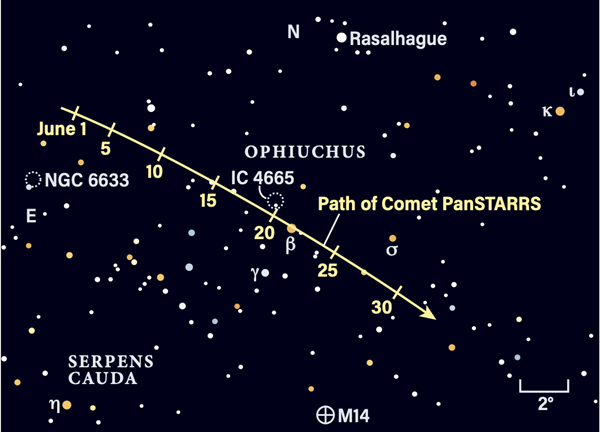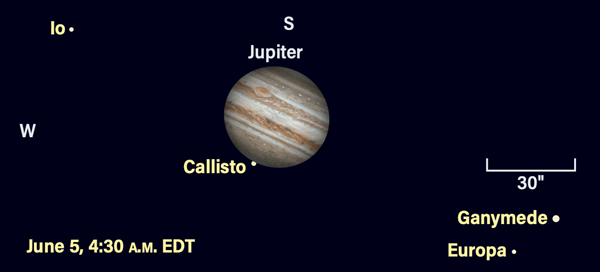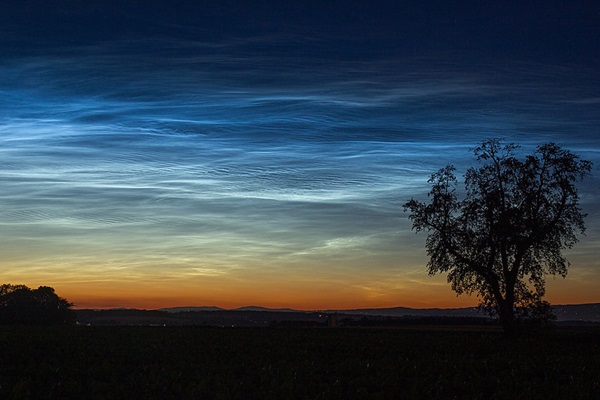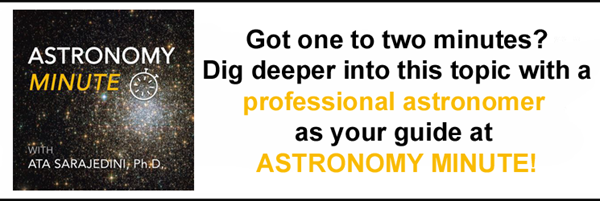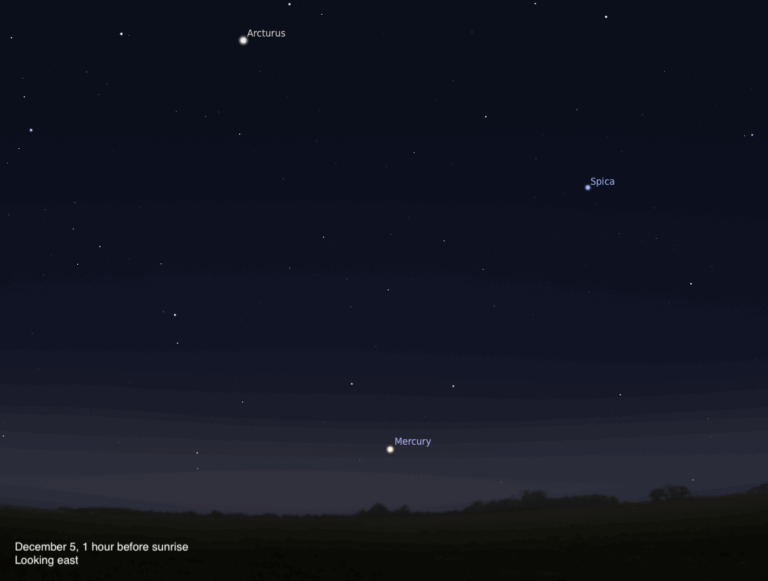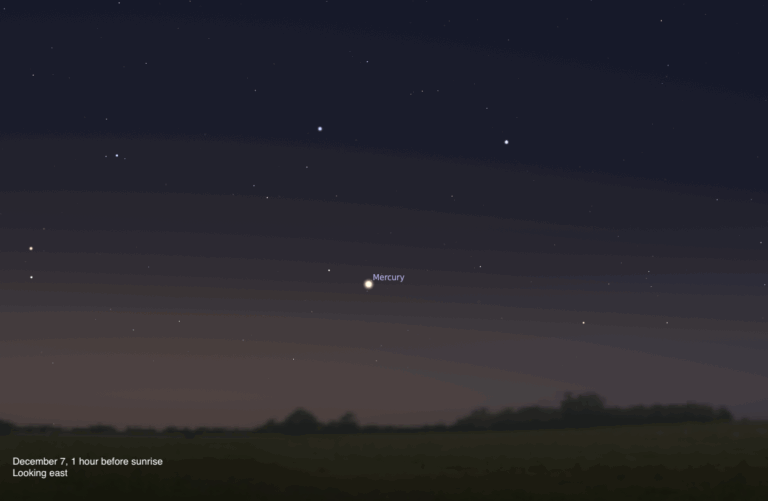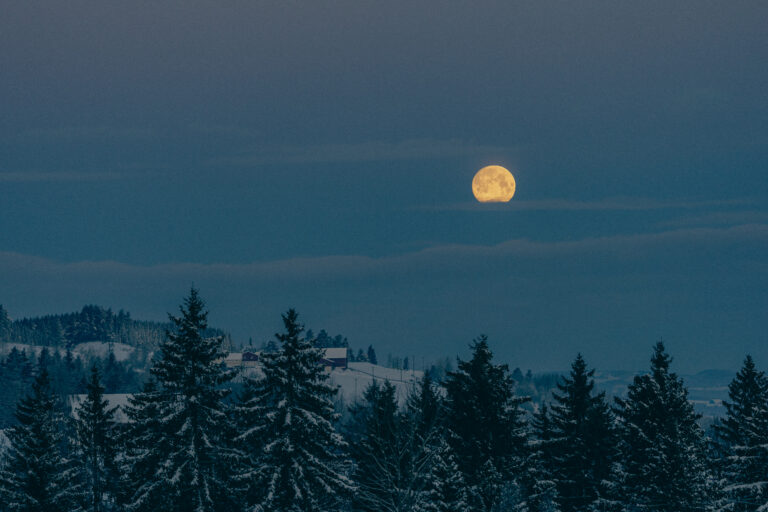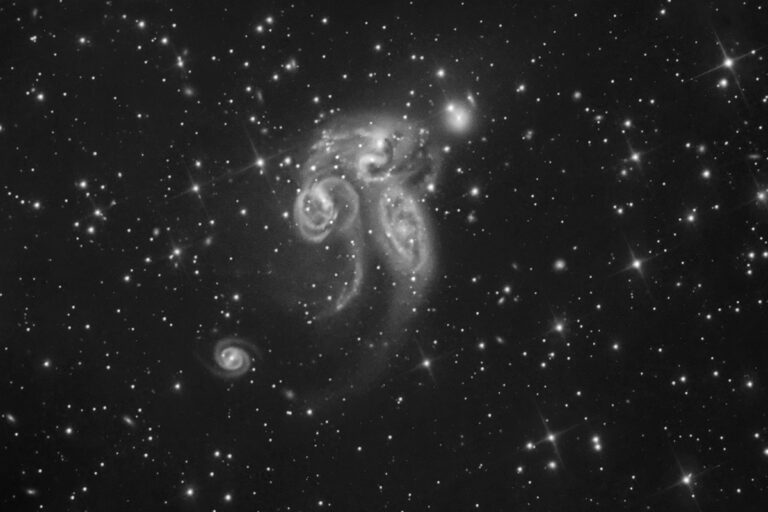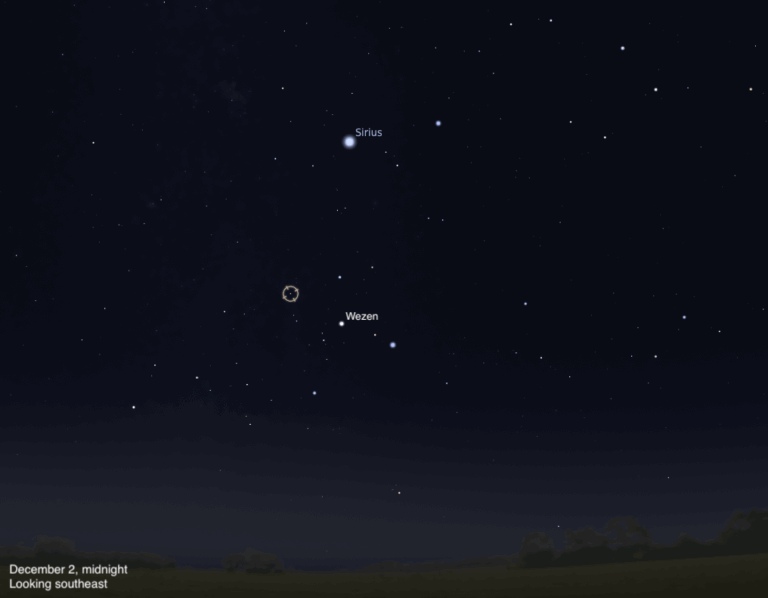Key Takeaways:
Friday, June 3
The Summer Triangle is a familiar asterism that flies overhead on warm summer nights. But before we hit summer, let’s enjoy one of spring’s star patterns: the Great Diamond, also aptly called the Spring Diamond. This same asterism is sometimes called the Diamond of Virgo or the Virgin’s Diamond.
At each point of the diamond is an easy-to-find star: Arcturus (magnitude –0.1), Spica (magnitude 1), Denebola (magnitude 2.1), and Cor Caroli (magnitude 2.9). You’ll find the Great Diamond high in the southwest after dark, slowly sinking toward the west as the hours tick by. While you’re there, consider focusing your attention on the Diamond’s faintest facet: Cor Caroli, which Astronomy columnist Phil Harrington calls “one of spring’s showpiece binary stars.” You can locate this star by dropping about 17.5° south of Alcor and Mizar, the stars that form the “kink” in the handle of the Big Dipper. Cor Caroli’s two components are separated by 19″ and glow at magnitude 3 and 6. Harrington recommends 16×70 binoculars for the best results.
Sunrise: 5:33 A.M.
Sunset: 8:24 P.M.
Moonrise: 8:42 A.M.
Moonset: —
Moon Phase: Waxing crescent (16%)
*Times for sunrise, sunset, moonrise, and moonset are given in local time from 40° N 90° W. The Moon’s illumination is given at 12 P.M. local time from the same location.
Saturday, June 4
Comet C/2017 K2 (PANSTARRS) is carving a path straight through Ophiuchus this month. Currently around magnitude 9.6, the Comet Observation database reports that the comet is still brightening; it’s expected to ultimately peak around 7th magnitude.
Discovered in May 2017, K2’s nucleus is roughly 25 miles (40 kilometers) across — that’s four times the size of Halley’s Comet. But K2 doesn’t get nearly as close to us because its perihelion, or the closest point in its orbit to the Sun, lies beyond the orbit of Mars.
K2 is a perfect target for June evenings, as it’s rising in the east as the sky grows dark. Tonight, you’ll find it just 2.2° east-southeast of 72 Ophiuchi, a magnitude 3.7 star that itself sits nearly 8° northeast of Cebalrai, the Serpent-bearer’s beta star. Just over 3.5° southeast of the comet tonight is NGC 6633, a magnitude 4.6 open cluster that spans nearly the same size as the Full Moon on the sky and contains about 30 stars. K2 is also about 8° east of another 4th-magnitude open cluster, IC 4665. This loose cluster is one of our galaxy’s brightest and makes a great target in a small telescope or wide-field binoculars. Compare the comet’s appearance to these two clusters and consider snapping a few photos of the celestial meetup.
Sunrise: 5:32 A.M.
Sunset: 8:25 P.M.
Moonrise: 9:42 A.M.
Moonset: 12:11 A.M.
Moon Phase: Waxing crescent (23%)
Sunday, June 5
Saturn stands stationary against the background stars of Capricornus at 10 A.M. EDT. The ringed planet is currently prominent in the predawn sky, shining at magnitude 0.6 to the upper left (northeast) of Deneb Algedi.
But this morning, you’ll want to focus in on the solar system’s other giant planet: Jupiter, which is a bright magnitude –2.3 beacon in southwestern Pisces. The planet still sits near Mars, which lies less than 5° away in Cetus, following the pair’s close conjunction last week.
Jupiter’s four Galilean moons regularly transit the disk — or, rather, three of those moons do. In recent years, the tilt of Callisto’s orbit relative to Jupiter and Earth means the moon does not transit, but instead appears to pass above or below the planet. But this month, conditions are right to see the moon disappear behind or pass in front of Jupiter. This morning, between 4 A.M. and 5 A.M. EDT, you can watch Callisto just skim behind the gas giant’s disk to the north, appearing partially obscured as it passes behind the planet.
Sunrise: 5:32 A.M.
Sunset: 8:25 P.M.
Moonrise: 10:44 A.M.
Moonset: 12:44 A.M.
Moon Phase: Waxing crescent (32%)
Monday, June 6
Venus dominates the morning sky in June, shining brightly first in Aries, where you’ll find it this morning, and then from Taurus later in the month. At magnitude –3.9, you can’t miss the planet in the predawn sky, sitting below (southeast of) Hamal and Sheratan, the two brightest stars in the Ram.
Through a telescope, Venus’ 13″-wide disk is nearly 80 percent lit. Its crescent will gain another 6 percent by the end of the month, though the entire disk itself will shrink to 12″ wide. Although you certainly won’t need binoculars to see Venus, if you have a pair handy, glance 6.5° east to land on distant Uranus. Glowing a soft magnitude 5.9, Uranus appears just 3″ across.
Finally, follow the line from Venus to Uranus another 14° in the same direction, and you’ll run right into the Pleiades, a sparking open cluster in northwestern Taurus.
Sunrise: 5:32 A.M.
Sunset: 8:26 P.M.
Moonrise: 11:48 A.M.
Moonset: 1:14 A.M.
Moon Phase: Waxing crescent (41%)
Tuesday, June 7
Today is one of the earliest days you might catch a glimpse of Mercury as it pulls away from the Sun. The solar system’s smallest planet rises in the east this morning shortly before 5 A.M. It’s currently a faint magnitude 1.5, so it may behoove you to pull out binoculars or a telescope for help spotting it. To find Mercury, look about 15.3° due east of Venus, which should still easily stand out, even in the growing twilight.
Take extreme care to stop hunting for your target several minutes before sunrise in your location, which may differ slightly from the time listed below. Never use binoculars or a telescope when the Sun is nearing or above the horizon, as chances are high that you could accidentally catch our star in your lenses and cause irreparable, serious damage to your eyes.
Don’t worry if you’re having trouble finding it — Mercury’s appearance will improve throughout the month as it brightens and rises slightly earlier, so just be patient.
First Quarter Moon occurs later this morning at 10:48 A.M. EDT.
Sunrise: 5:32 A.M.
Sunset: 8:27 P.M.
Moonrise: 12:51 P.M.
Moonset: 1:39 A.M.
Moon Phase: Waxing gibbous (51%)
Wednesday, June 8
The constellation Hercules is perfectly placed on June evenings to target some of its myriad wonders. Rife with deep-sky objects, the Strongman is home to one of the sky’s most famous globular clusters: M13, also called the Hercules Globular Cluster. This magnitude 5.8 ball of stars sits 2.5° due south of Eta (η) Herculis, about one-third of the way along a line drawn between this star and Zeta (ζ) Her. Covering roughly 24′ on the sky, you may even spot M13 without any optical aid on a good night. (Tonight it may be a challenge, though, thanks to the brightening Moon in Virgo.)
From M13, it’s a short hop to a second target: spiral galaxy NGC 6207. Located 0.5° northeast of M13, you can catch both objects in the same field of view at low powers. (Again, tonight that may be difficult, and you might instead prefer to pump up the power to enjoy the galaxy on its own.) NGC 6207 is magnitude 11.6 and fairly compact compared to M13, covering only 3′. It will appear oval-shaped through your scope, some two to three times as long as it is wide. Researchers believe it sits roughly 30 million light-years away.
Sunrise: 5:31 A.M.
Sunset: 8:27 P.M.
Moonrise: 1:56 P.M.
Moonset: 2:03 A.M.
Moon Phase: Waxing gibbous (61%)
Thursday, June 9
In 1923, Edwin Hubble discovered a variable star in the Andromeda Galaxy (M31) that ultimately allowed him to calculate its distance, proving the object was not within our Milky Way but far beyond it. That star was a particular type of variable star called a Cepheid, and tonight, we’re going to track down the original Cepheid variable, the star known as Delta (δ) Cephei.
After dark, the house-shaped constellation Cepheus the King lies on its side in the north, slowly swinging upward (and upside-down) around Polaris, which marks the North Celestial Pole. Delta Cephei is located roughly 2.5° northeast of Zeta (ζ) Cephei, which marks the house’s southeastern corner (lower left when it is right-side up). Delta itself varies between magnitude 3.6 and 4.3, completing one full cycle of dimming and brightening again over a period of 5.366 days. You can watch this for yourself by observing the star several nights in a row and comparing it to its nearby neighbors: Zeta is magnitude 3.4, so Delta appears roughly as bright at its brightest, and noticeably fainter at its dimmest. For another comparison star, Epsilon (ϵ) Cephei, which sits 1.3° southeast of Zeta, is magnitude 4.2 — so it will roughly match Delta Cephei at that star’s faintest.
In 1912, Henrietta Swan Leavitt discovered a link between a Cepheid variable’s period and its intrinsic brightness. It is this link that allowed astronomers like Hubble to use them as distance indicators. Today, that link is called the period-luminosity relationship or the Leavitt law.
Sunrise: 5:31 A.M.
Sunset: 8:28 P.M.
Moonrise: 3:03 P.M.
Moonset: 2:26 A.M.
Moon Phase: Waxing gibbous (71%)
Friday, June 10
Noctilucent cloud (NLC) season is now in full swing. With no major meteor showers this month, NLC offer naked-eye observers a treat when their silver tendrils appear high overhead, typically for those at latitudes between 55° and 70° north.
Unlike “normal” clouds, noctilucent clouds form high in the atmosphere when ice crystals grow on tiny particles of dust. Because they are so high, these clouds remain in sunlight long after the Sun has set below your local horizon. Sometimes, NLC “storms” can occur, when these clouds spread across half the horizon or more. Their ever-changing displays can be magical to watch but are hard to predict, so if you’re trying to catch some, step outside every so often after dark and look north to see whether NLC are occurring. You’ll be able to easily discern them from other types of clouds because while most clouds appear as dark blots on the sky after sundown, NLC appear bright as they reflect sunlight back to Earth.
Sunrise: 5:31 A.M.
Sunset: 8:28 P.M.
Moonrise: 4:12 P.M.
Moonset: 2:50 A.M.
Moon Phase: Waxing gibbous (81%)


